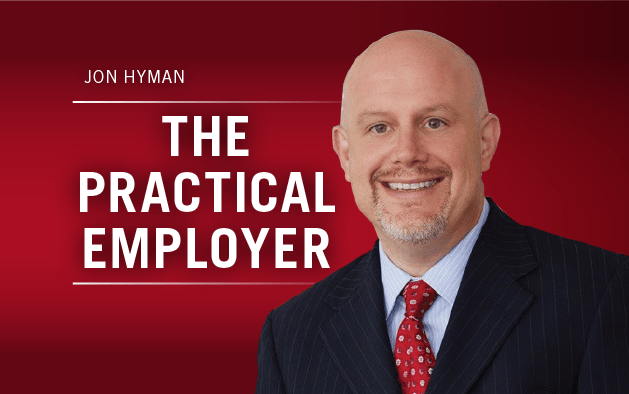It’s been a decade since the Mental Health Parity and Addiction Equity Act went into effect, with the goal that insurers and health plans offer mental health and substance abuse benefits comparable to coverage of medical and surgical care.
Despite progress made since the law’s passage, some barriers to equality still exist. As vital as behavioral health care is for people with substance abuse and mental health disorders, unlike their physical health needs, employees with employer-sponsored coverage may face challenges in accessing and affording quality mental health care coverage.
The current environment sees employers, employees, the government and individuals spending more money on behavioral health than ever before, but the results just aren’t there, said Henry Harbin, a psychiatrist with over 40 years’ experience in the behavioral health field.
Harbin, whose experience includes senior positions at public and private health organizations, said that while fatality rates for many medical issues are decreasing, fatality rates from suicide and opioid overdoses — two major issues in behavioral health — are increasing. Between 2004 and 2014, the death rate for heart disease decreased by 16 percent and for stroke by 19 percent. In the same span, the death rate climbed by 17 percent for suicide and over 200 percent for opioids, according to the Centers for Disease Control and Prevention.
For employers, genuinely caring about their employees’ mental health issues is a good start, but providing quality coverage is important as well. Behavioral issues among employees are prevalent. According to the National Institute of Mental Health, 1 in 5 adults in the United States have a mental health disorder. Meanwhile, 1 in 22 adults have a serious mental illness like schizophrenia, major depression or bipolar disorder, the study noted.
Access Issues
There is a national shortage of seasoned behavioral health professionals in the United States, which can “constrain access to essential care and treatment for millions of individuals with mental illness of substance use disorders,” according to the Health Resources and Services Administration report “Behavioral Health Projections, 2016-2030.” The agency, part of the Department of Health and Human Services, focuses on improving access to health care services for individuals who are uninsured, isolated or medically vulnerable. The report stressed the fact that certain areas of the United States have few or no behavioral health providers available.
The shortage of behavioral health care providers impacts a majority of employer-sponsored health plans, according to Mercer’s May 2019 “10-Minute Survey on Behavioral Health” that surveyed 523 employers. Sixty-three percent of respondents reported that they lack adequate access to outpatient behavioral health care in some or all of their locations.
Some 74 percent of employers said they are taking action to improve employee access to quality behavioral care. Most commonly, 49 percent addressed this by enhancing their employee assistance program services or changing their EAP provider. Only 12 percent of these employers conducted a network analysis to identify gaps in behavioral health care.
Early intervention can be vital for behavioral health, especially for patients with a severe disorder, Harbin said.

For a patient with schizophrenia, for example, screening by one’s primary care physician or pediatrician can help identify the problem early on. The patient can then see a specialist sooner and will likely see better outcomes, Harbin said.
Tom Sondergeld, vice president, global HRIS, benefits and mobility at global pharmacy giant Walgreens Boots Alliance, said that one of the biggest priorities in their carrier analysis was to evaluate access. Employees with a behavioral health issue often face long wait times to see a behavioral health specialist such as a psychiatrist. “To me, that’s not parity,” Sondergeld said.
Walgreens has been pushing hard on its insurance carriers in recent years so that employees can find coverage for the care they need in a timely manner, Sondergeld said.
While larger organizations may have more resources to negotiate with insurance carriers, he suggested that small organizations can join coalitions such as the National Business Group on Health, allowing their voice to be heard within that larger pool of companies.
He also said that using data to tell a powerful story is a way smaller organizations can influence their carriers. Employers can get this information through their health plan, which can use its data to analyze utilization and costs across the various benefits to get a better picture of the overall spend and areas to concentrate on to improve spend.
For example, if a third of the workforce needs access to behavioral health care for themselves or their loved ones, but the data show that a majority of people can’t access care in a timely manner, that’s a powerful, data-supported story.
Also read: Managing Mental Health Crises at Work
The human impact of mental health problems is notable, as mental illness impacts how people handle stress, how they relate to others and whether they make healthy choices, according to the Centers for Disease Control and Prevention. Still, HR can use the business case to support the need for better access.
Poor mental health and stress can impact an employee’s job performance, their relationship with co-workers and their physical capabilities and daily functioning, according to the CDC. Depression interferes with a person’s ability to complete physical job tasks about 20 percent of the time and reduces cognitive performance about 35 percent of the time, the agency notes.
“When [employees] can’t find the care they need, the business suffers because they aren’t engaged,” Sondergeld said.
Network Issues
A host of issues exist even when an employee does access care for behavioral health problems. A majority of people with behavioral conditions are screened and treated through primary care and not a specialist, Harbin said. The quality of this behavioral health care is often low, with many people not necessarily even getting a diagnosis but getting a prescription for a psychiatric drug. Harbin noted that the patient’s response to the drug may not be tracked efficiently, the drug and dosage may remain unchanged, and this may help lead to low efficacy outcomes.
Employers should urge employees to use specialists if they want improved outcomes, he said.
Patients accessing out-of-network providers is another issue, he added, citing a 2017 Milliman Inc. report, “Addiction and Mental Health vs. Physical Health: Analyzing Disparities in Network Use and Provider Reimbursement Rates.”
Patients seeking behavioral care more often need to use an out-of-network provider than patients seeking medical or surgical care, according to the report, which also found that medical and surgical providers are paid at higher rates than behavioral providers. The lower reimbursement rates are one reason for low network participation rates among behavioral health providers, making it difficult for patients to find more affordable in-network care.
Employers can work with their providers or vendors to understand if there are places where there are more complaints about access issues than others, said Mandie Conforti, a licensed clinical social worker and senior consultant at Willis Towers Watson.
Even though the mental health stigma is lifting, it’s still there, she said. Many employees hesitate to call HR to complain about not being able to find a behavioral health provider.
“We’ve been asking behavioral health centers to do more customized networks, enhancing the network in locations where employers may have a larger base of employees,” she said.
Quality Control Issues
It’s difficult for a patient to find the right provider for their unique situation or one who can get them the best results.
Employers have historically not asked their insurers many questions about behavioral health or the quality of these provider networks, said Sandra Kuhn, Mercer’s national lead for behavioral health consulting. This is an area in which they have potential to be more proactive and really push for more information from their insurers.
Questions can include: What quality measures do you use to bring carriers in and keep them in-network? Can you share with us at the end of the year a data set to show how many people were in treatment and the average length of time people stay in treatment? Also, did people improve while they were in treatment?
“Tools exist to measure those things, they’re just not being uniformly applied,” Kuhn said.
Also read: Lessons on Addressing Mental Illness in the Workplace
She also suggests that employers look for specific data points as indicators of whether the health plan is adequately addressing behavioral health, starting with data on what the employee population looks like. Then, look at EAP utilization. If utilization is low but a lot of people are using the behavioral health network in the health plan, then perhaps employees aren’t aware of the EAP services. That knowledge could give employers the opportunity to close the gap.
Data can also educate employers on how much out-of-network behavioral health care employees are getting. Maybe employees are having access issues, or maybe they’re unsure of how to go about finding care. They could be relying on friends’ referrals rather than something more evidence-based.
“If [employees] don’t have a clear way to obtain information about the network, the types of providers and what provider is good for what types of challenges, they’re just randomly picking, and that’s problematic,” she said.
She continued that quality metrics are “reasonably established” for certain areas of the behavioral health system. The type of care people may need ranges from outpatient care for mild or moderate cases to more complex and higher levels of care for more severe conditions. This inpatient care is where quality metrics are consistent, but most people come into contact with behavioral health services at the outpatient level, Kuhn said.
There are some insurance carriers and tech solutions like Ginger.io and Lyra Health that are using their own measures, but these aren’t consistent with each other, she said. This can lead to inconsistency and member confusion.
“They don’t know if they’re going to a quality provider or not, and oftentimes they don’t know how to judge if they’re improving,” Kuhn said. That may lead to people thinking that if they go to their friend’s therapist, they’ll get the best care.
“There are all sorts of wives tales that come out of there not being a good way to determine quality,” she added.
Employers can also push vendors on how they assess quality, said Conforti. Many times providers self-report quality to behavioral health centers. Whether they actually have the competencies to do so, they could simply check the boxes that they can work with any disorder.
“There has to be a better way at assessing and making sure that providers are doing good, sound, evidence-based care,” she said.





 Thankfully, courts have stepped in to fill in the ADA’s omission. For example,
Thankfully, courts have stepped in to fill in the ADA’s omission. For example, 




 Cutting-edge companies at the time then began offering health insurance to employees as a recruitment incentive. And, in the early 1950s, the Internal Revenue Service deemed that insurance and similar benefits wouldn’t be counted as taxable income. Viola! The workplace social contract was born.
Cutting-edge companies at the time then began offering health insurance to employees as a recruitment incentive. And, in the early 1950s, the Internal Revenue Service deemed that insurance and similar benefits wouldn’t be counted as taxable income. Viola! The workplace social contract was born.

 “We don’t have to be somebody else, but we have to learn from somebody else,” Berger said.
“We don’t have to be somebody else, but we have to learn from somebody else,” Berger said.